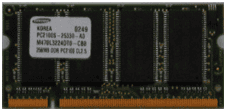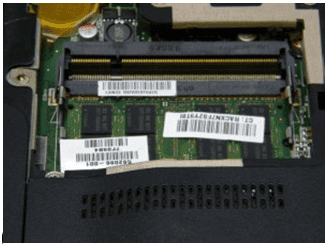A+ 220-1101 Exam Objective 3.2 Given a scenario, install the appropriate RAM.
Click here to go back to the A+ Main Domain 3.0 Table of Content
Welcome to Exam Notes by CertBlaster! In this article, we will cover Core 1 objective 3.2 Given a scenario, install the appropriate RAM.
When you are taking the CompTIA A+ Hardware exam 220-1101, you will need to know the different types of RAM, their characteristics, and which types are preferable for high-performance workstations and servers.
RAM types
Virtual RAM
We’ll start out by defining the types of RAM your system uses. Physical RAM is the traditional memory module or stick you are used to seeing in PC builds. We’ll cover that in detail shortly. Here we’ll talk about Virtual RAM. Using the term virtual implies that it is not a physical component. Instead, Virtual memory is the use of computer storage like the system disk or a USB device to emulate RAM. This process allows the system to provide the highest level of resources to the apps that are actively in use while moving the data being used by background apps into virtual RAM. The background data is stored in “pages” in a system file named pagefile.sys. This method allows the system to retain the data of the background apps and be quickly available without consuming the main system memory. When the background data is needed it is moved back into the main memory.
DIMMs and SODIMMs
DDR RAM comes in two primary physical sizes: DIMMs and SODIMMs. DIMM stands for Dual In-line Memory Module and SODIMM stands for Small Outline Dual In-line Memory Module.

DIMMS are commonly used in desktop computers and servers while SODIMMS are used in laptop computers.
Exam Tip: Remember this fact by using the mnemonic DIMMs for Desktops (D for D).


What is DDR RAM?
DDR stands for Double Data Rate and it is the standard RAM used in the majority of PCs today. There are a few different versions of DDR RAM:
- DDR, first appeared around 2000.
- DDR2, which doubled the performance of DDR, while using less power.
- DDR3, which doubled the performance of DDR2 while using even less power.
- DDR4, which offers higher clock speeds along with lower latency and power consumption.
- DDR5 doubles the performance of DDR4 further reduces latency and has a unique power management capability which allows each module to manage its own power requirement. This contrasts with DDR4 and earlier memory types where the entire memory bank determines the power requirement. Remember that a hardware upgrade might be needed in order for a computer to fully support DDR5 memory.
Keep in mind that as your RAM data rate increases the hardware platform i.e. Processor and Motherboard must support the new RAM.
The type of motherboard being used determines the type of RAM that can be installed. Every DDR version has its own unique notched module shape, preventing the installation of DDR RAM on a motherboard that doesn’t support it.
ECC RAM
Error-Correcting Code (ECC) RAM can both detect and correct memory-based data errors. ECC RAM is commonly used in critical servers where data corruption cannot be tolerated. ECC RAM is more expensive and requires ECC-supporting motherboards and processors which are more expensive as well.
RAM Channels
RAM channels refer to the level of communication between RAM modules and the system’s memory controller. The greater the number of channels, the more RAM modules the memory controller can address. Single-channel RAM has one lane of communication. Multiple single-channel modules can be used in pairs, but your highest speed will only be that of the slowest module. You should always use matched modules of the highest speed available.
Most standard PCs are at least dual-channel compatible, meaning the motherboard has at least two RAM sockets. Two identical RAM modules must be installed for dual-channel functionality to work.
Triple-channel motherboards have at least three RAM sockets (or a multiple of three) and require certain models of CPU such as the Intel Core i7 or Xeon processor. There are also Quad-channel motherboards with four RAM sockets (or a multiple of four). Triple and quad-channel RAM systems are much more expensive to build and are commonly reserved for very high-performance servers and workstations.
The bottom line is the more channels of RAM your CPU can address, the more simultaneous operations it can perform.
There you have it. You are now a RAM expert! Time to move on to objective 3.3!
Click here to go back to the A+ Main Domain 3.0 Table of Content


